5 Lunar New Year Traditions You Can Observe at Home
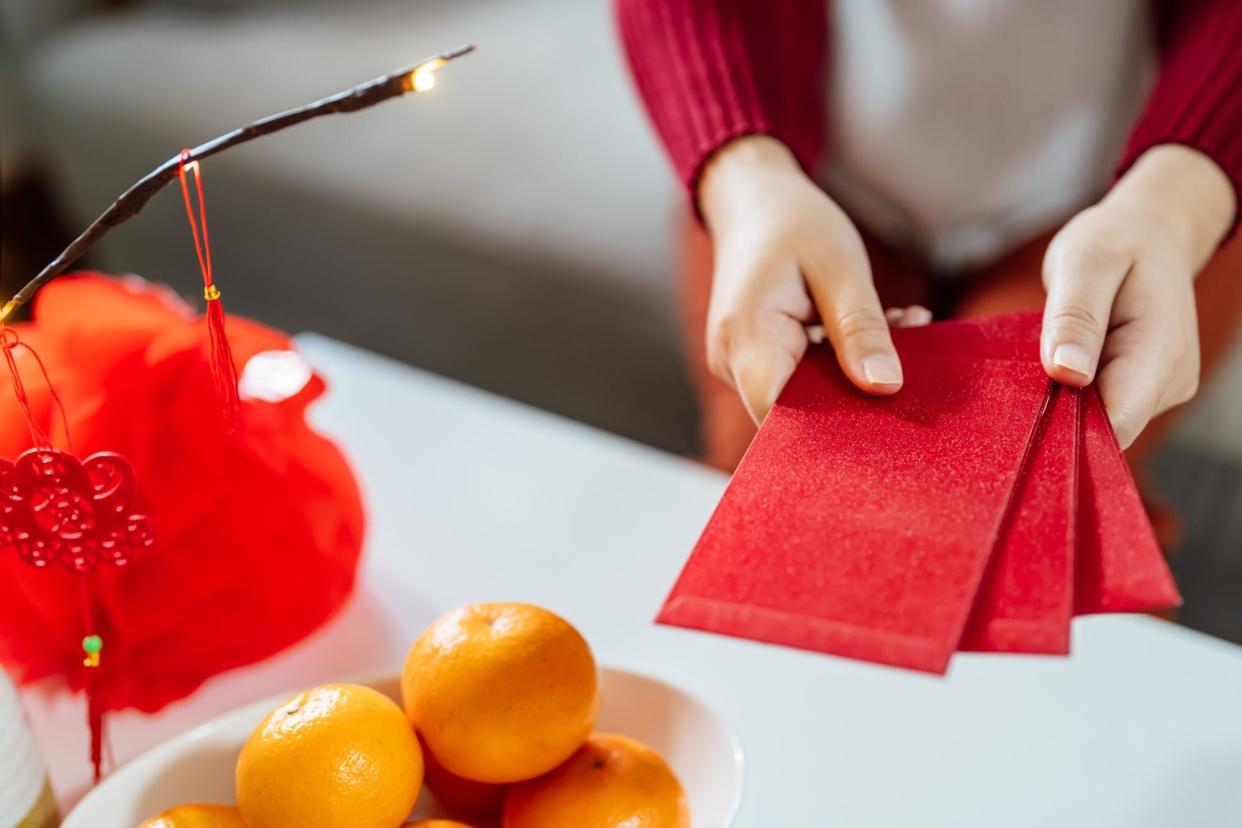
charliepix / Getty Images
The Lunar New Year, also known as Chinese New Year, takes place this weekend, on January 22, 2023—but in households around the world, preparations have already begun. In addition to the big, luxurious meal that's held the evening before, people in China and throughout Asia embrace traditions in the lead-up to the holiday (and for the two weeks after) to usher in good luck and renewal during the new year; they prepare and decorate their homes, exchange gifts, and share symbolic foods. These are all great ways to bid farewell to 2022, the year of the strong, brave tiger, and welcome the year of the gentle, lovable rabbit—as well as support Chinatowns and Asian American and Pacific Islander (AAPI)-owned businesses local to you.
To learn more about Lunar New Year traditions and what they symbolize, we reached out to Grace Young (@stirfryguru on Instagram), a Chinese American cookbook author, Chinatown activist, and food historian specializing in Chinese cuisine. She won the 2022 James Beard Humanitarian of the Year Award for her work to save America's Chinatowns amid AAPI hate during the COVID-19 pandemic. (Want to learn more? Follow Young and the James Beard Foundation's hashtag #SupportChinatowns.)
"Lunar New Year is a time for renewal and reunion," Young says, explaining that this holiday is like a combination of Thanksgiving and Easter. "No matter where you are, you go home. It's time to give thanks and come together as a family, and a time of new beginnings. No matter what your year was before, the new year is an opportunity to start fresh."
That is, as long as you get ready exactly according to tradition. "It's very important to do specific things and eat certain foods to ensure your blessings and good fortune," Young says. Here are five (specific!) things you can do to bid farewell to the Year of the Tiger and start the Year of the Rabbit on the right foot—plus, what you shouldn't do during the first two weeks of the Lunar New Year.
Related: Good Luck Foods to Eat for Lunar New Year
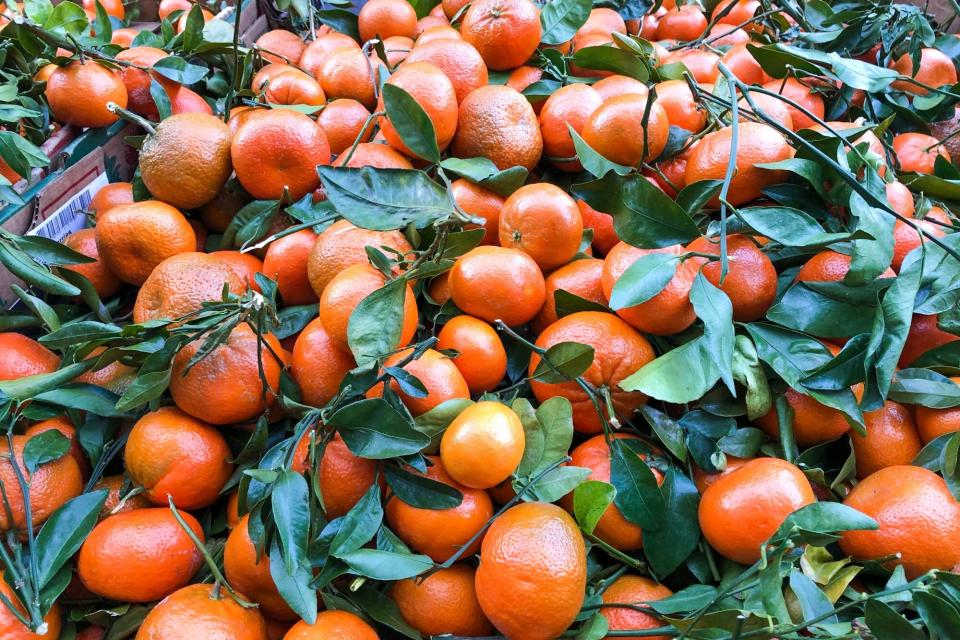
Courtesy of Grace Young
1. Make a Lunar New Year Centerpiece With Lucky Money
"The first thing everyone does is create a centerpiece of oranges and tangerines," says Young. "Preferably, the tangerines have green leaves. The most coveted tangerines have fresh green leaves and stems. If you're very traditional, you add one pomelo."
The latter, a gumdrop-shaped fruit that's larger and sweeter than a grapefruit, may be harder to come by, especially if you don't live near a Chinatown, but include one if you can; its fragrance wards off bad luck. Arrange the citrus in a bowl, then tuck in the finishing touch—a small rectangular red envelope with money inside.
The envelope is called hong bao, and contains li xi, or "lucky money." It could be a quarter, a dollar, or more. Adults give children hong bao for occasions like birthdays, too, since it symbolizes good wishes for the coming year. The red envelopes can be plain or highly decorated, and they're easy to find online. Young recommends Grand Tea and Imports for its wide selection of red envelopes, including ones printed with auspicious Chinese characters and this year's zodiac sign—the rabbit.
When you visit friends or relatives during the two weeks after Lunar New Year, pay the tradition forward and bring them a bag of oranges, two tangerines, and li xi.
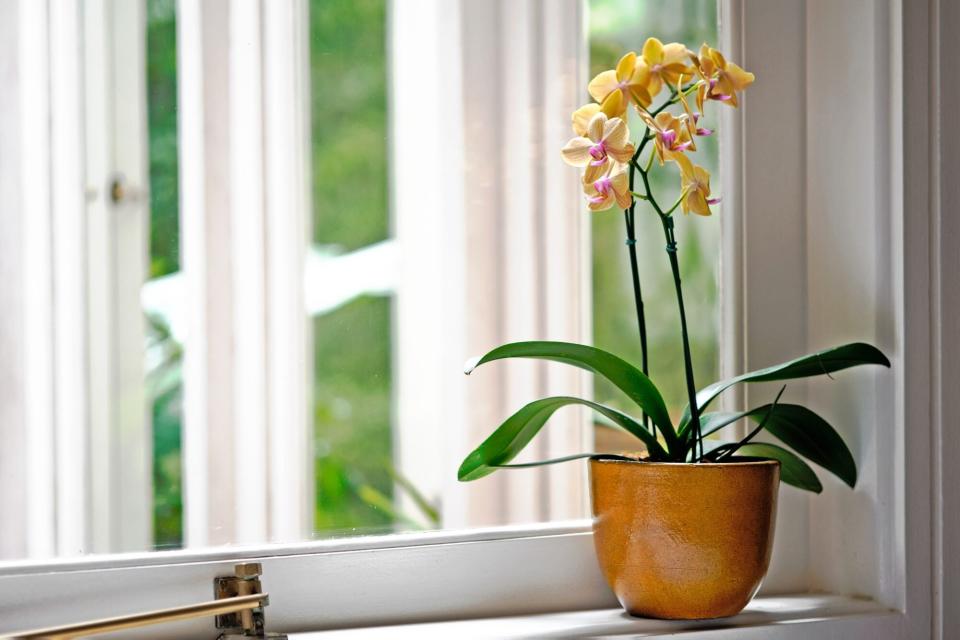
GETTY IMAGES
2. Decorate With Flowers
It's important to decorate your home with fresh flowers, says Young ("My parents always bought cherry blossom branches on New Year's Eve," she explains). The hope is that they'll bloom on New Year's Day to bring good fortune. Try potted azaleas, amaryllis, lilies, and narcissus; paperwhites, orchids, mandarin orange trees, and lucky bamboo are popular, as well. G&J Florist in New York City's Chinatown has them all—and ships the lucky bamboo.
3. Tidy Up
Cleaning your home is critical—and not just because you're going to have people over to eat. It has to do with the kitchen god, usually represented by a wooden plaque that is placed in the kitchen next to the stove, explains Young. He keeps an eye on your behavior, and, once a year (a week before the end of the year!) he reports back to the Jade Emperor, the ruler of heaven.
You want to impress him with a clean home, bribe him with gifts of sweet oranges and tangerines to sweeten his words, and get him drunk on rice wine (to slur his words so the Jade Emperor cannot understand anything bad in his report), which will ensure blessings for the new year. "It's a really playful tradition," says Young. Grand Tea and Imports carries a kitchen god plaque, too.
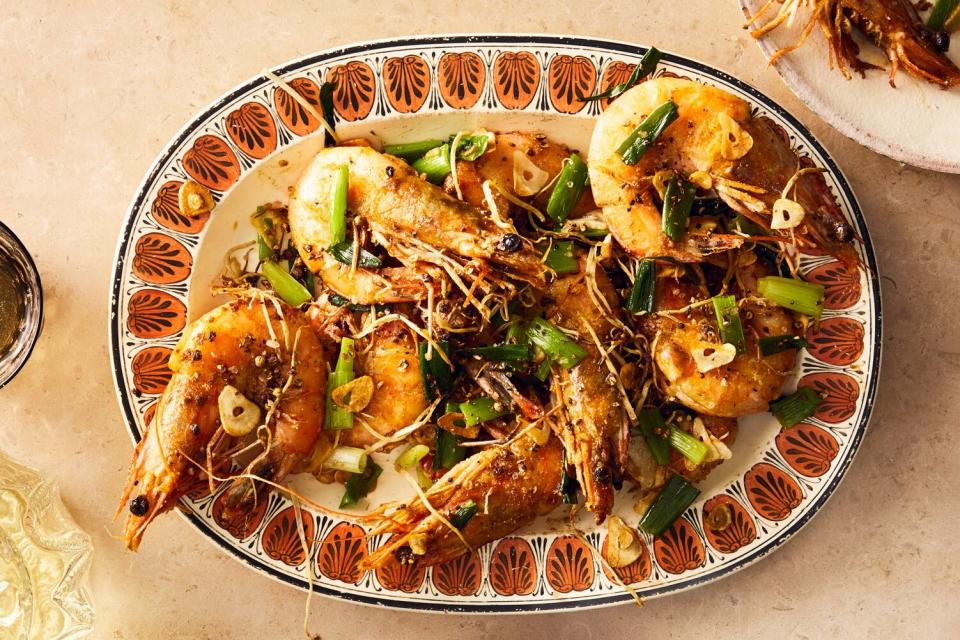
Chris Simpson
4. Make a Lunar New Year's Eve Feast
It's "the most bountiful meal of the entire year," says Young, with luxurious foods from land and sea. It's traditionally held in the evening of New Year's Eve—but it's very important to save some food for New Year's Day.
Shrimp
Many families serve a shrimp dish, says Young. It's typically a stir-fry, like kung-pao shrimp or salt and pepper shrimp (although the cooking technique doesn't really matter). The Cantonese word for shrimp sounds like laughing ("ha"), so shrimp is said to bring joy to your life.
Poultry
"Chicken signifies the wholeness of life on earth," says Young. "Serving a whole chicken symbolizes a proper end of the old year and the beginning of the new one. There must be a chicken—or duck, if your family prefers it." Soy sauce chicken and poached chicken with ginger and scallions sauce are classic favorites.
Shellfish
Scallop or clam shells resemble ancient Chinese coins, so they symbolize wealth and prosperity. To ensure your new year is profitable, a dish like clams with black bean sauce or a stir-fry of scallops with ginger and snow peas can be part of the meal.
The Cantonese word for oyster, meanwhile, sounds like the words for "good things," so it's meaningful to serve them, too. "When you eat oysters, good things come into your life," says Young. Her family liked to make a stir-fry with minced oysters, shiitake mushrooms, Chinese sausage, carrots, celery, ground pork, and water chestnuts served in lettuce leaves.
Lobster, however, is the most significant shellfish to serve. "It holds the life and energy of the dragon," says Young, one of the most powerful symbols in Chinese culture. "The dragon is the symbol for emperor—supreme power." Some families make a simple stir-fry of lobster with scallions and ginger.
Pork
One especially fun Chinese New Year's Eve tradition is hosting a jiaozi, or dumpling-making party. A typical filling includes minced pork, scallions, cabbage, ginger, and garlic. A coin is folded into one dumpling; whoever gets it will be extra lucky in the coming year.
Like lobster, roast pig is highly symbolic, and it's key that its skin be crispy and crackling. "The pig itself symbolizes bounty, and the crispy skin represents purification," says Young. Sweet and sour pork (or chicken) is another popular dish, because the word for sour signifies a grandchild or a growing family, she says.
Vegetables
Lettuce and shiitake mushrooms take on lucky meaning. The Cantonese word for lettuce sounds like another that means "growing wealth," says Young; mushrooms grow quickly, so they're a metaphor for growing fortune. "In my family, it's very common to do a stir-fry of lettuce with garlic, a little fresh jalapeño, and rice wine—or a stir-fry of mushrooms and sugar snap peas," she adds.
Fish
The final and most important dish at any Lunar New Year feast is the whole fish. "It doesn't matter if it's steamed, pan fried, deep-fried, or poached—you just have to have a whole fish served with the head and tail intact," says Young. "It symbolizes a favorable beginning and end to the new year." The word for fish is also a homonym for abundance, and because fish swim in pairs, the dish symbolizes marital bliss. The type of fish also isn't specified, but branzino, trout, red snapper, or sea bass are typical choices. Young's family likes to poach or steam the fish and serve it with scallions and ginger oil.
Just as important as the the whole fish? Leftovers. "The fish is the course that's served last, and you don't finish it," says Young. "Finishing it on the next day, New Year's Day, symbolizes bringing abundance from the previous year into the new year."
Noodles
Any type of long noodles symbolize longevity, so you'll often find them on the table.
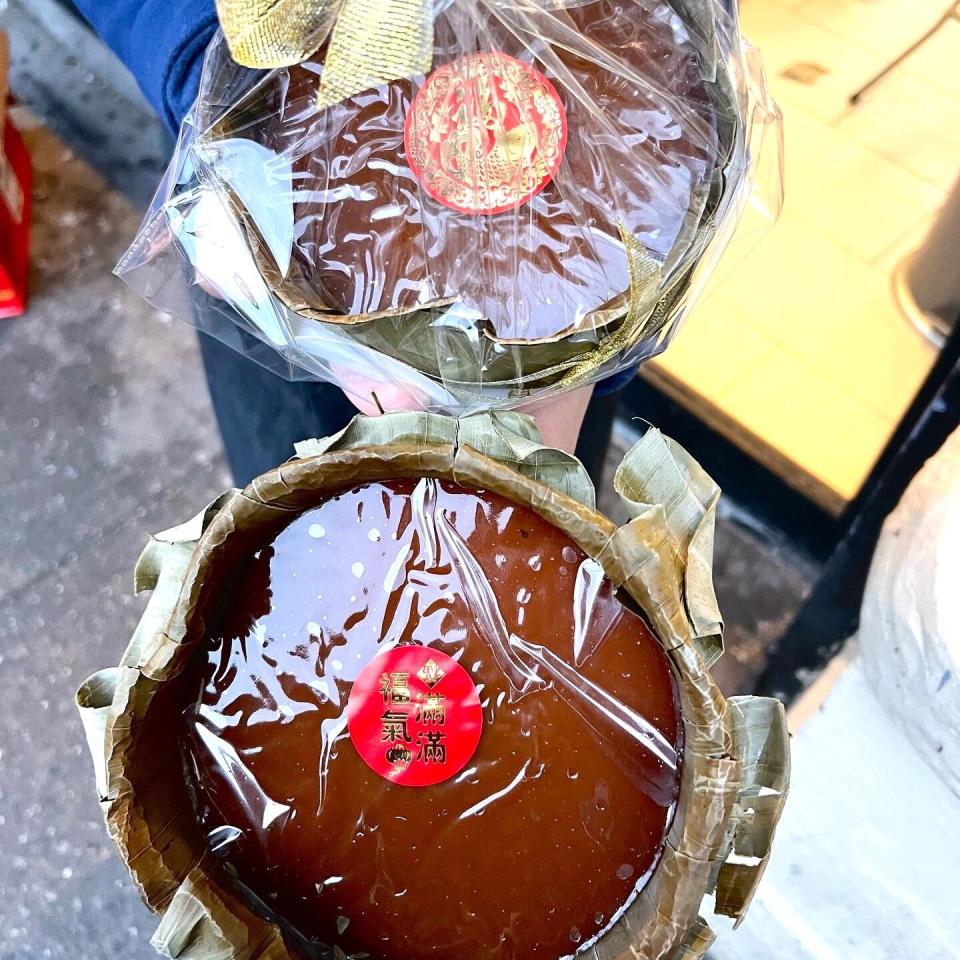
Courtesy of Grace Young
5. Eat Lunar New Year's Day Sweets
In addition to leftover delicacies from the night before, New Year's Day is filled with sweets. Because they're complicated to make, they're typically bought from a bakery. A word to the wise: Secure these sweets, especially nian gao, in advance.
Nian Gao
The traditional new year's cake is made of glutinous rice flour, a Chinese sugar sold in slabs called brown candy, and water. It's a round, flat, and hard cake that "symbolizes the roundness of life and the cohesiveness of family," says Young. At home on New Year's Day morning, it's cut it into 1/4-inch-thick slices, dipped in beaten egg, and pan-fried in a little vegetable oil. "It's the taste of the new year, really," says Young. "Once fried, the sweet caramel-flavored slices have a mochi-like texture that is so good. "
This year, Young will buy her nian gao at a Malaysian bakery in New York City's Chinatown called Kuih Cafe. The owner, Veronica Gan, makes a "gorgeous" version wrapped in banana leaves with French-style caramel instead of the Chinese brown candy—and she produces only 30 a day, they're so labor intensive. If you want to nab one, be sure to check the hours and availability; it's open only on Friday and Saturday afternoons (today, January 20, and tomorrow, January 21), and its cakes will sell out quickly.
Jian Dui
Fried sesame balls with red bean paste filling are another traditional sweet you'll find at Chinese bakeries this time of year (and at many all year long). They're crunchy and toasty on the outside and chewy on the inside, with a dollop of earthy-sweet red bean filling. New Golden Fung Wong—the oldest bakery in New York City's Chinatown—is known for its sesame balls and traditional nian gao.
What Not to Do for Lunar New Year
A few specific things are considered unlucky at Chinese New Year and during the two weeks after, says Young.
Don't Cook
The Buddhist tradition is that no fish, chicken, or livestock are killed on the first day of the new year. "This is a time for purification, and in order to receive the proper blessings, no blood should be shed for food," explains Young. In addition to nian gao, sesame balls, and leftovers from the previous night, a Buddhist vegetarian dish called Buddhist Delight is typically eaten on New Year's Day.
Don't Clean
"The last thing you would do is sweep or vacuum," says Young. "You don't want to sweep away your good fortune!"
Don't Use Knives or Scissors
"Cutting anything is symbolic of cutting off your good fortune," says Young. This applies to cooking as well as getting a haircut. "For the first three days of the new year, all the hair salons in Chinatown will be closed." It used to be stricter—people wouldn't get their hair cut for the first two weeks of the new year.
Don't Pay Bills
Pay all your bills before the end of the year. You don't want to pay anything on New Year's Day, or you'll be paying all year.
Don't Argue
Refrain from getting into an argument with, well, anyone. "It's very important to have a positive outlook, especially for the first two weeks of the year," says Young.

